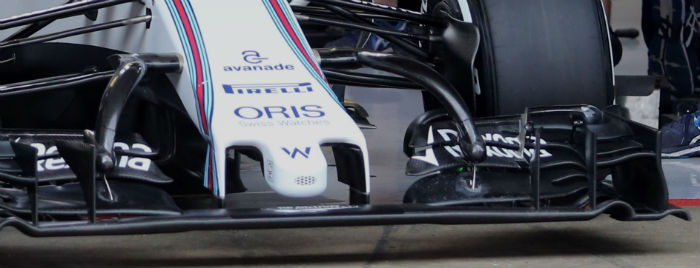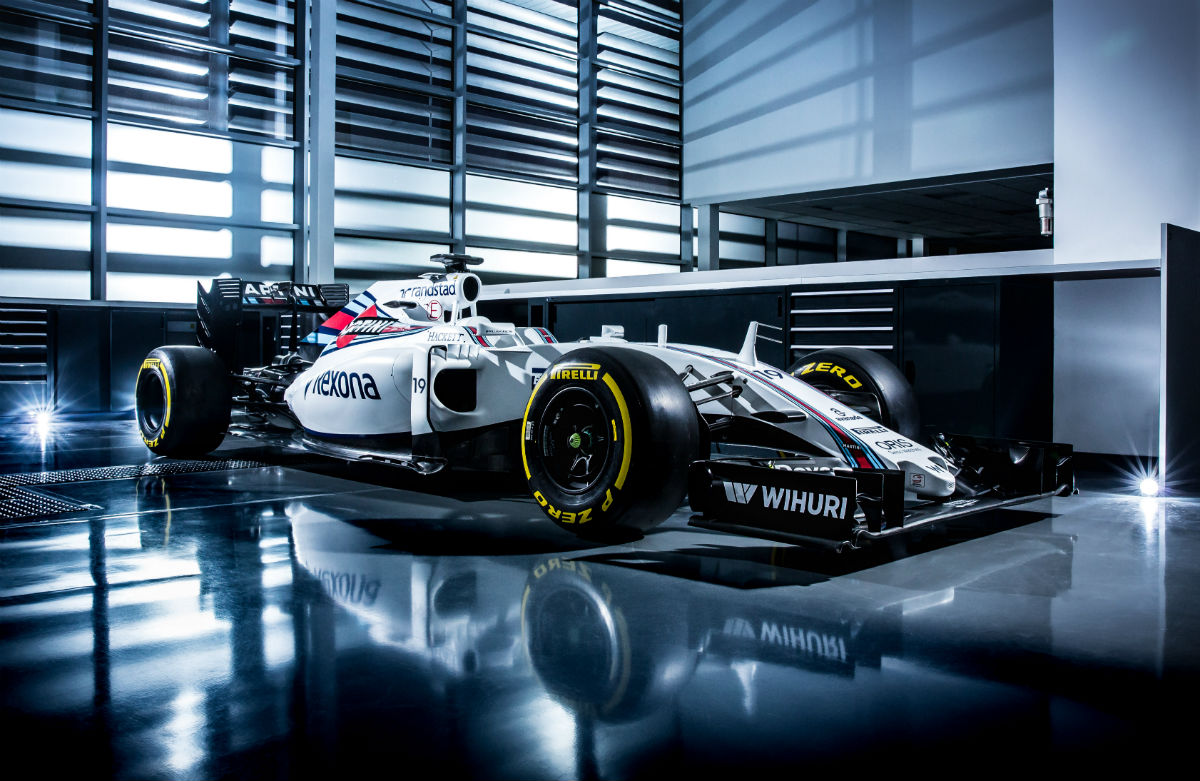Williams was the first team to show of its 2016 car, in the form of a couple of pictures posted on the teams website. The initial images of the FW38 reveal a fairly iterative looking design at least at first glance, but according to Claire Williams there is more to come “the car you see here is by no means the finished product” she explains in the press release which accompanied the two images released.
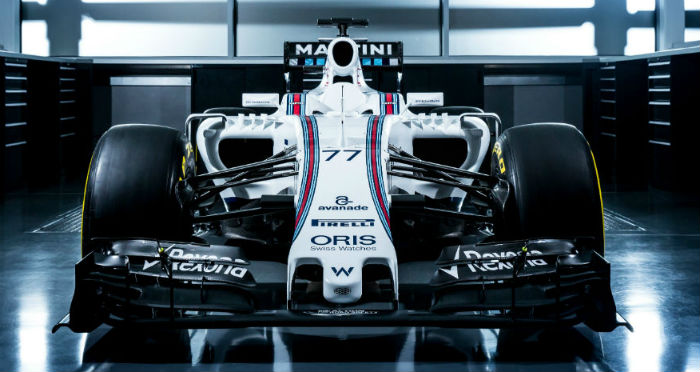
According to Pat Symonds the Williams technical director the FW38 was designed to improve some of the weaknesses found in the FW37, this was the exact same approach taken with the FW36.
“The FW37 was a pretty effective car and so we concentrated on understanding the areas where we could improve it without losing the attributes which made it effective” Symonds explains. “It is no secret that the low speed performance of the FW37 didn’t match its high speed performance so a lot of time was spent looking into why this was and subsequently making changes, which we hope will improve the situation.” He had earlier described the FW37 as a ‘bloody good all rounder.’
The sides of the FW38 cockpit (below) are higher and stronger than those of the FW37, something which comes as a result of one of only a small number of technical regulation changes for 2016.
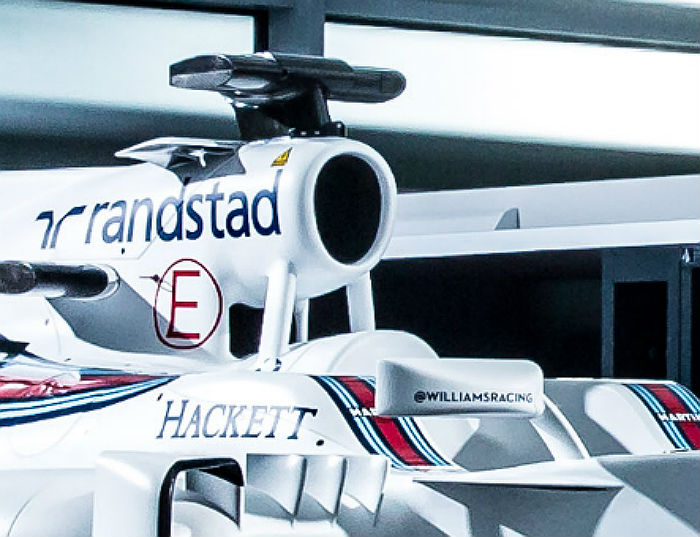
The roll hoop on the FW38 (above) is a direct carry over of concept from the FW37 (below) and can actually be dated back to the FW35. A cooling duct is located under the main air box duct, as was the case on other recent Williams designs.
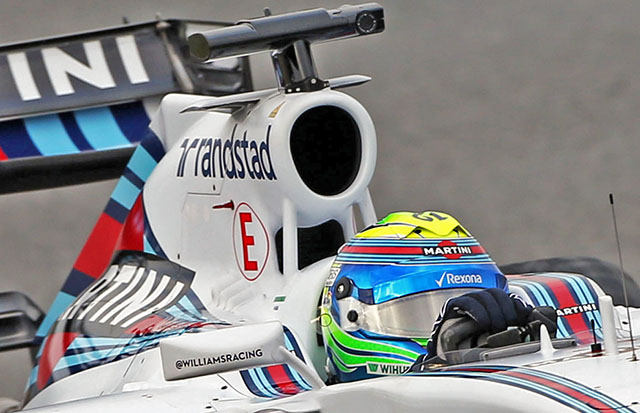
The suspension remains the current typical layout of pushrod actuated torsion bars at the front and pull rod actuated bars on the rear. We will look at that in more detail during testing.
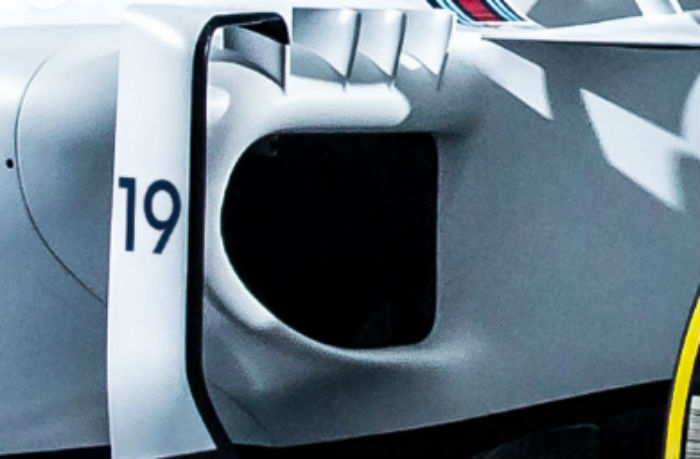
The main sidepod ducts are a slightly different shape on the FW38 (above) compared to the FW37 (below), suggesting that there may be a slightly revised cooling system under the bodywork, though this is to be expected with a new specification Mercedes engine fitted.
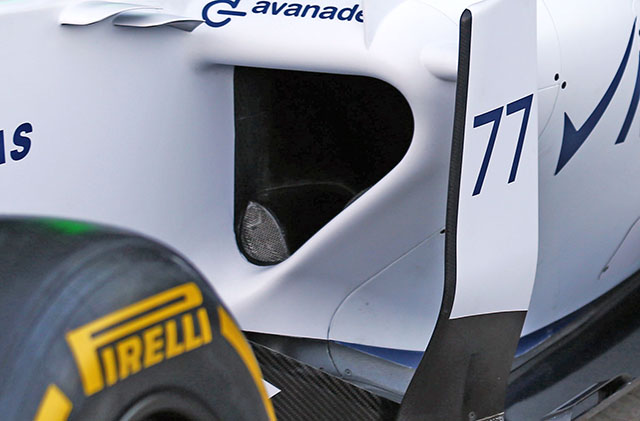
The Williams FW38 differs from the FW37 in the details but not in the overall concept, as such it features a number of refinements on the 2015 design. One of these can be seen when looking at the rear end of the car.
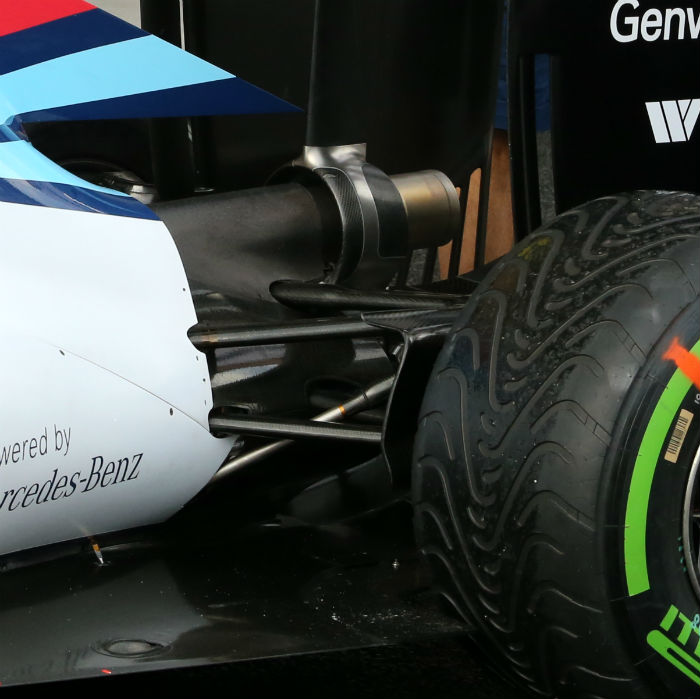
The 2016 car (below) seems to have the engine cover (white) terminate further forward on the car compared to the 2015 (above) version (assuming the wheelbase is the same which is far from certain) leaving a much longer transmission cover section exposed. The wishbones on the ’16 FW38 seem to be more widely spaced too (though this could be an optical illusion caused by reshaped bodywork – we don’t think that is the case though). The rear wing support (seen in silver on the FW38) follows the same concept on both cars but on the 2016 version the Y section of the support passes between the tailpipe and the twin wastegate exits. Note also the redesigned brake duct.
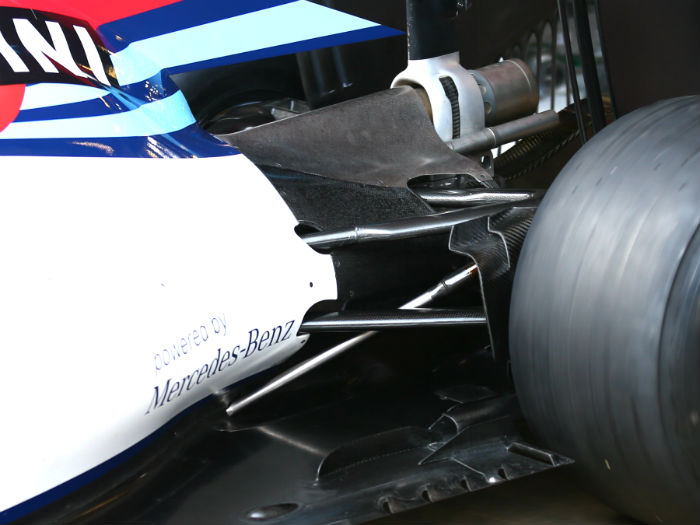
During the Barcelona test Williams was one of a number of teams to test a revised bodywork package in this region of the car (below).
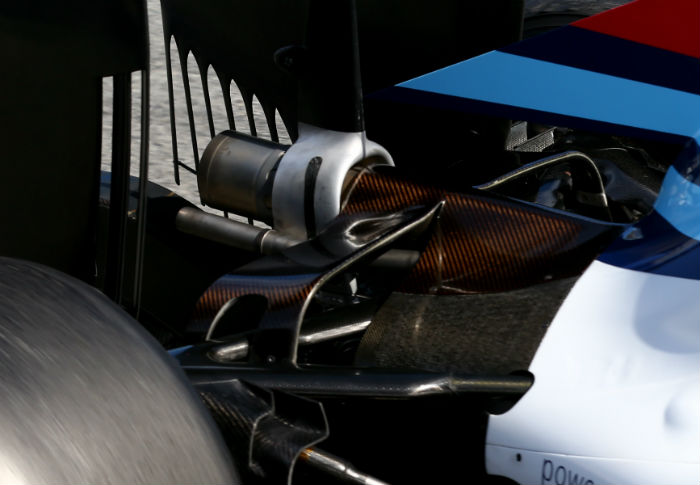
On this new version the bodywork over the transmission has a more ridged shape and the main cover terminates earlier. Above that a kind of flying buttress style turning vane and be seen forming a T shape on the rear bodywork. Note how much more of the wastegate exit can be seen with this layout.
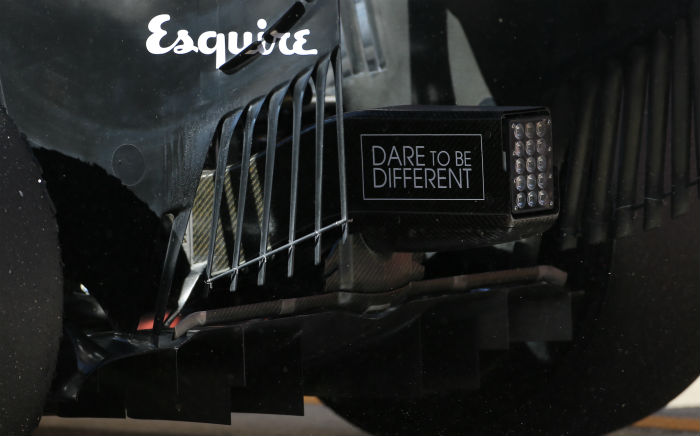
A good look at the rear of the FW38, something teams tend to want to hide.
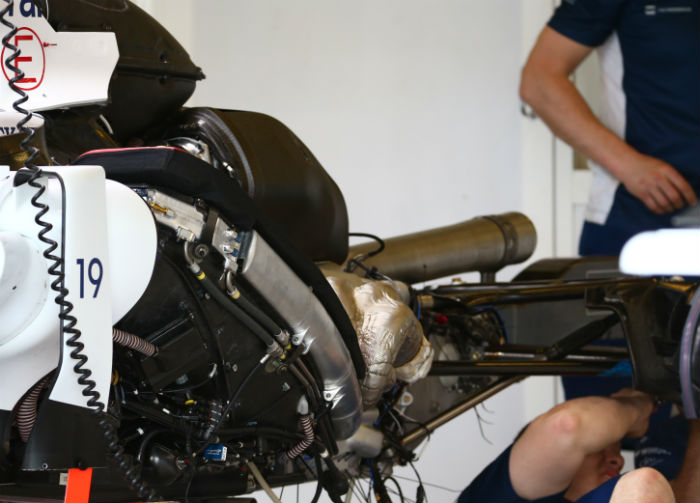
A look at the Mercedes power unit installation in the Williams. Note the cooler layout, exhaust header and pullrod rear suspension layout.
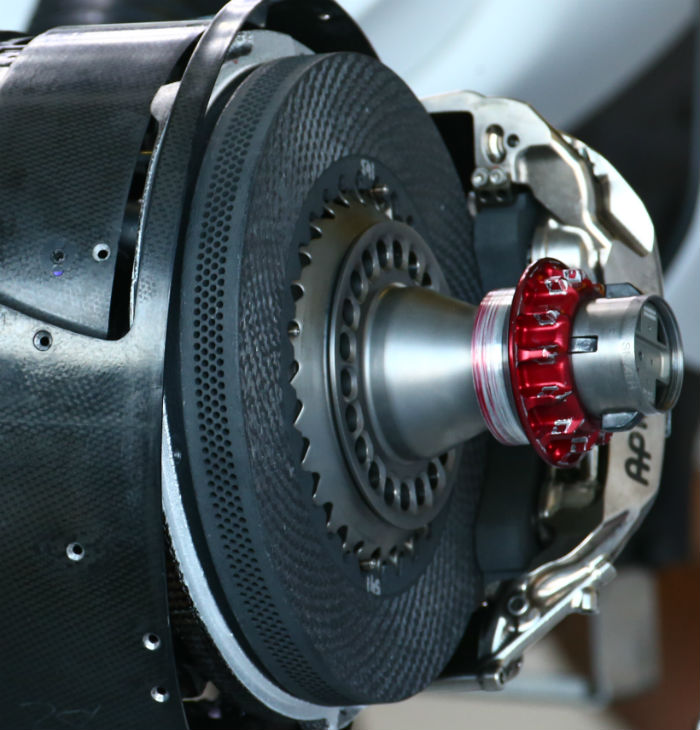
Williams is one of the teams using the less common AP Racing brake caliper, seen here mounted at the rear of the disc on the front brake setup
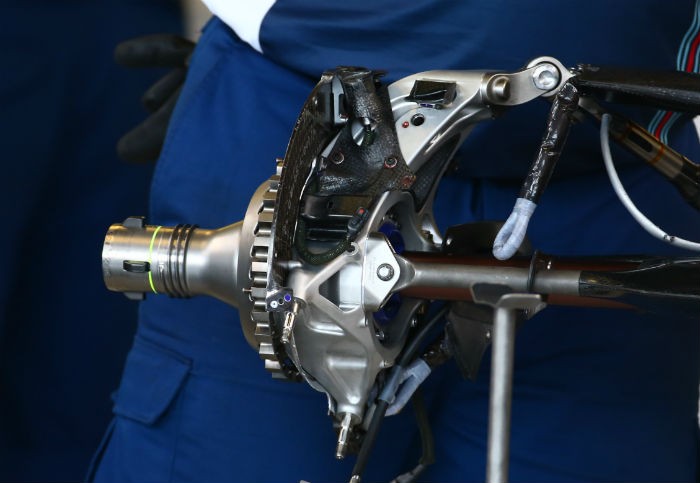
The rear upright on the FW38. Note the upper wishbone and pushrod mounting as well as how high the lower rear wishbone sits
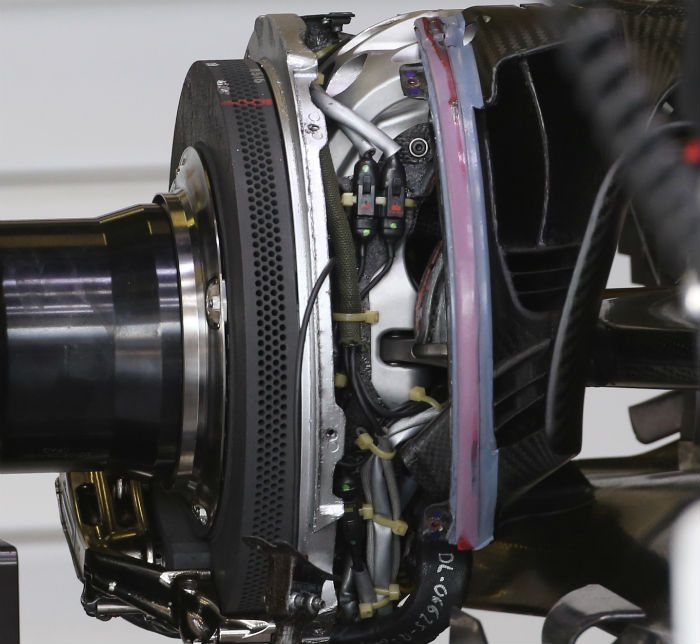
Fully assembled the rear corner has its brake caliper mounted at base of the disc but slightly off centre toward the rear. Note the number of cooling ducts.
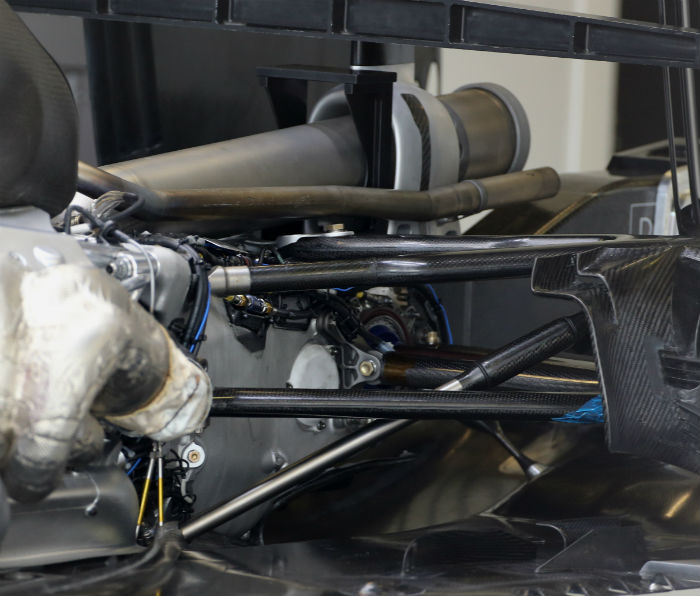
The Williams retains an aluminium gearbox casing a version of which it also supplies to Manor.
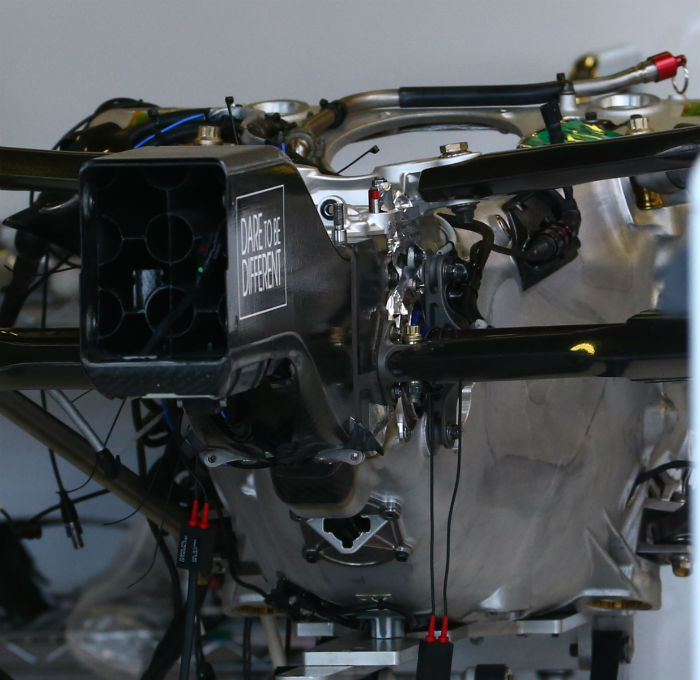
A slightly better look at the Williams transmission, with the aluminium casing clear to see, as is the carbon fibre rear impact structure. The hole for the tailpipe is clear to see, the section leading from the turbine to the main tailpipe seems to be a seperate part (below)

A look at the front bulkhead of the FW38, the master cylinders are clear to see, as is the steering rack and a laser sensor (Optimess MC CCD).
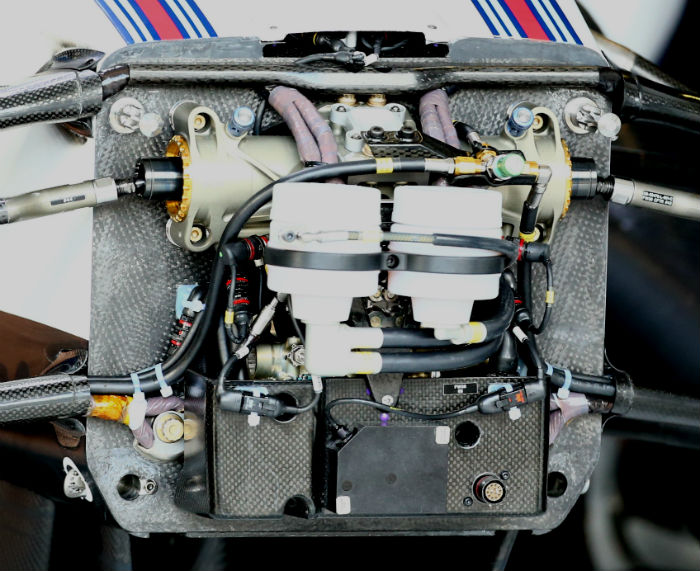
Williams brought a revised nose to the Bahrain Grand Prix, the new design would have required a visit to the Impact Centre at Cranfield University for a new crash test.
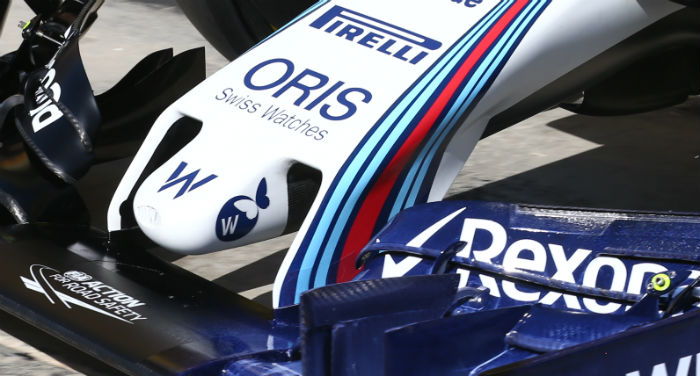
The new design (above) is slightly shorter and more rounded than the version used in Melbourne (below).
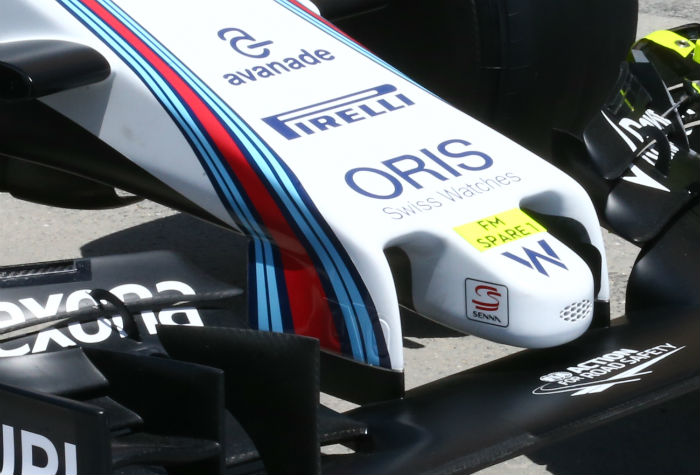
A look at the Williams chassis with the power unit and rear end removed. Note the radiator layout on the right hand side of the car (below)
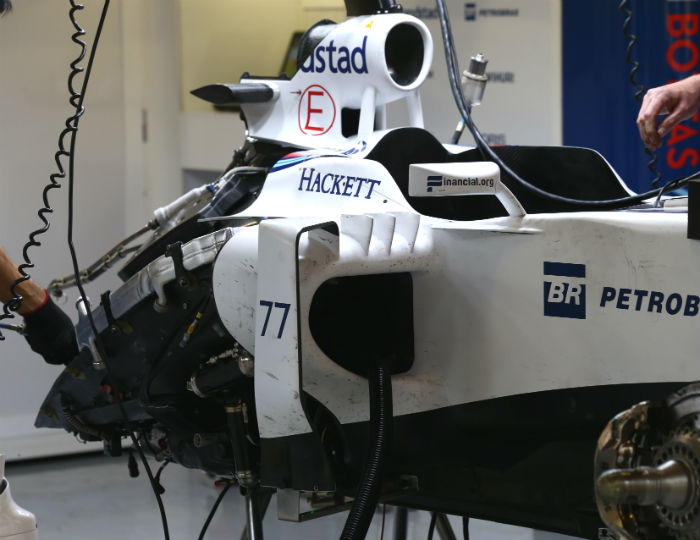
In post race testing at Barcelona Williams fitted a unusual looking aerodynamic upgrade to its car designed to simulate the load and balance of the 2017 specification car. The new parts consisted of a revised rear wing with a wide additional element mounted forward of the main plane, something which used to be common practice in the 1990’s (and more recently has been seen on a Formula Student car designed by Oxford Brookes University).
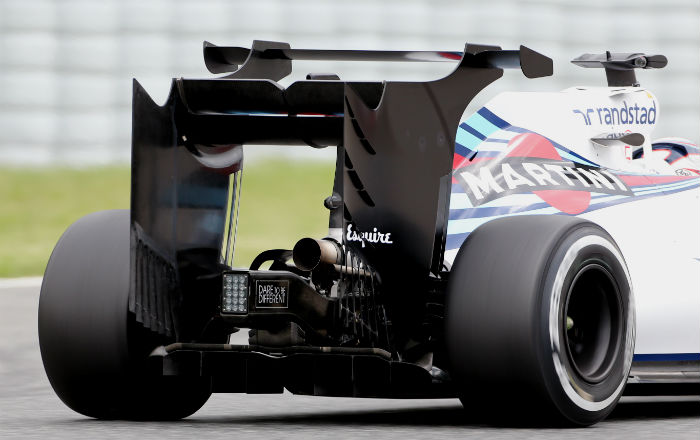
Williams has no intention of racing this configuration of wing (not even legal under the regulations) but is using to gain a better understanding of the implications of the new aerodynamic regulations which will see lower and wider rear wings introduced as well as delta shaped front wings.
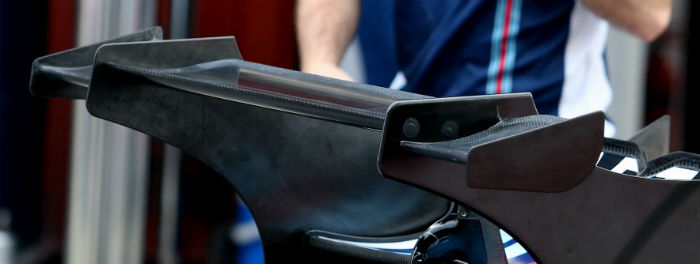
The additional wing is split into three spans with a relatively thin section on the central part, looking at its shape it almost appears to be mounted backwards with a raised leading edge. The outer elements are more conventional in design with simple endplates.
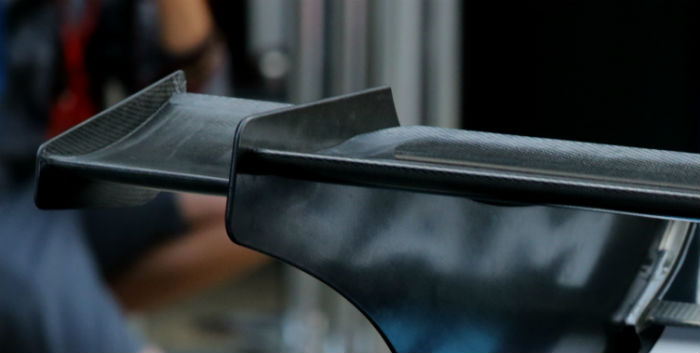
The front wing used on the Williams in the test also featured some additional and rather bulky looking elements attached to what appeared to be an otherwise standard front wing. Picking up on the mandatory camera housings on the nose of the car these curved components linked to the front wing flaps on either side of the nose. The purpose of them is unclear.
